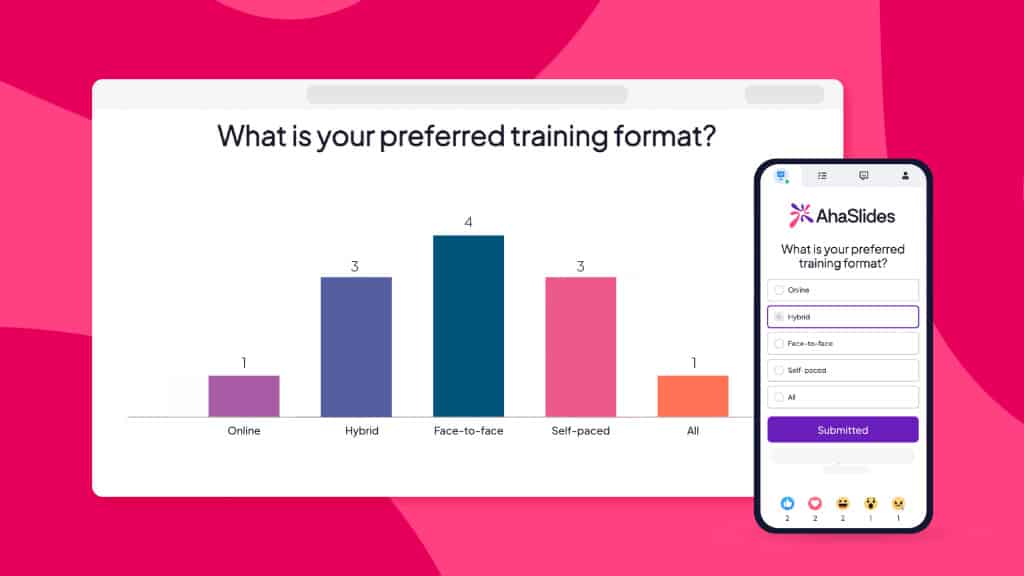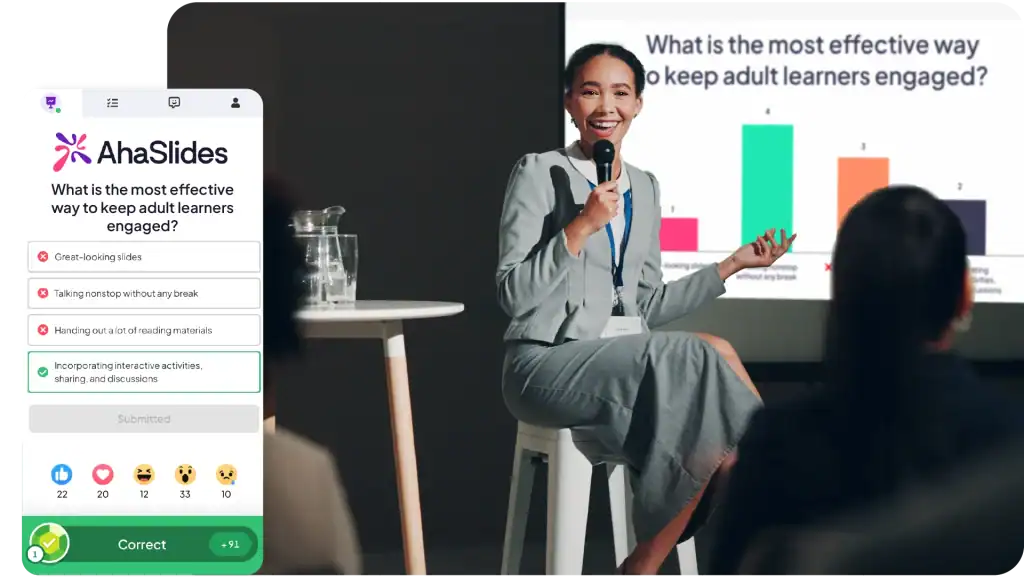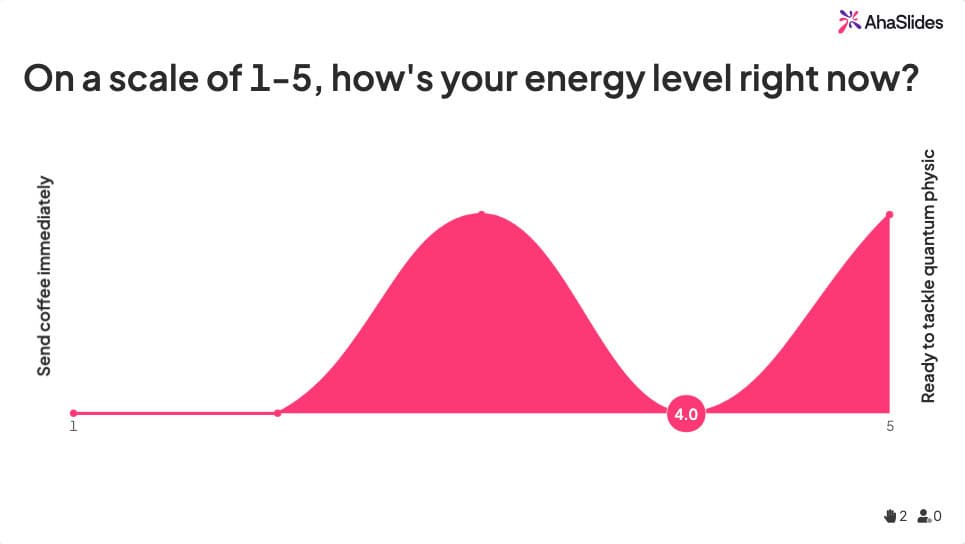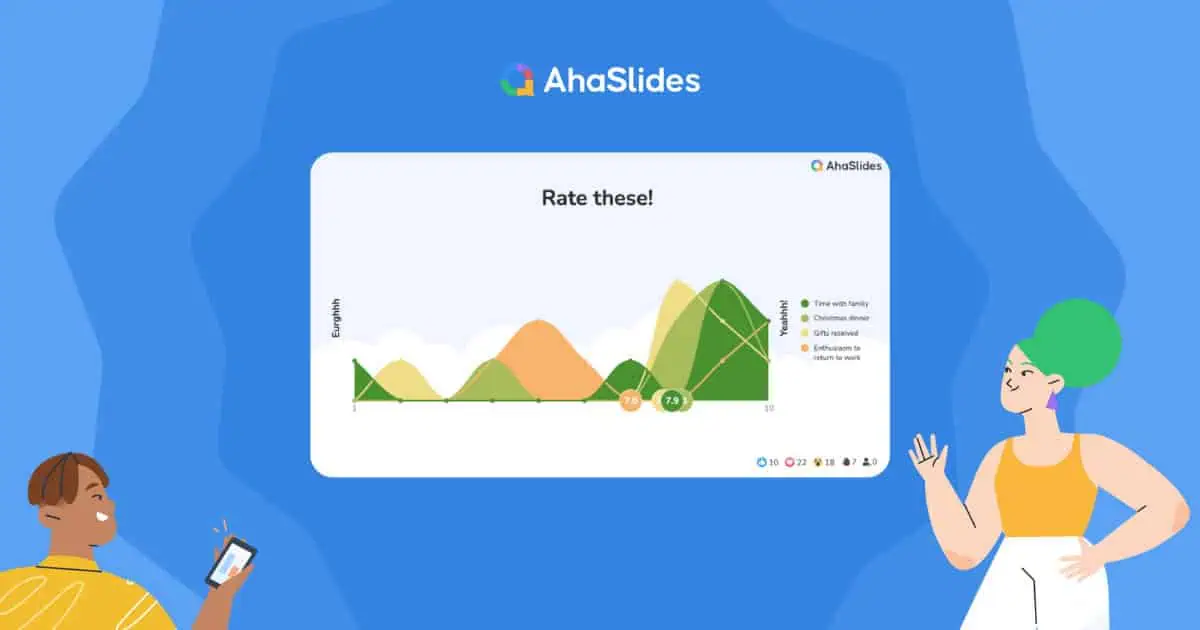I roto i te ohanga aro kua whakangunguhia e TikTok i tenei ra, tata ki te 8 hekona koe ki te hopu i te hiahia o tetahi—he iti ake te wa i te ika koura. Mēnā he whakararu tēnei mō te whakaaturanga 5 meneti, koinei te rongo pai: ko nga whakaaturanga poto to patu huna.
Ahakoa ko etahi e kopikopiko ana i roto i nga paparanga 60-kiriata e matakitaki ana i nga kanohi e kanapa ana, ka tukuna e koe he karere arotahi e mau tonu ana. Ahakoa kei te toha koe ki nga kaipupuri moni, ki te whakangungu i tetahi roopu mamao, ki te whakaatu i nga kitenga rangahau, ki te uiui ranei mo to mahi moemoea, ehara i te mea ngawari noa te whakahaere i te whakatakotoranga 5-meneti—he tohu mahi.
Ko tenei aratohu e ahu mai ana i te putaiao whakaaturanga, nga whakaaro mai i nga kaiwhakangungu ngaio e tuku ana i nga rau o nga huihuinga ia tau, me nga tikanga whakamatau mai i nga kaikorero TED hei awhina i a koe ki te hanga whakaaturanga e uru ana, e whakatenatena ana, e mau tonu ana te paanga.
Ripanga o Ihirangi
He aha nga Whakaaturanga 5-Minute e hiahia ana ki tetahi huarahi rereke
rangahau mai i te tohunga neuroscientist a John Medina e whakaatu ana ka tino heke te aro o te hunga whakarongo ia 10 meneti i nga whakaaturanga tuku iho. I roto i nga tautuhinga mariko, ka iti te matapihi ki te 4 meneti noa iho. Ka noho pai to whakaaturanga 5-meneti i roto i tenei waahi reka—engari mena ka tika to hoahoa.
He teitei ake nga waahi me nga whakaaturanga poto. He mea nui ia kupu. He mea nui ia kiriata. Karekau he wa mo te whakakii, karekau he waahi mo nga paatata, me te kore e aro ki nga mahi hangarau. Ko nga rangahau ahumahi e whakaatu ana ko te 67% o nga tohunga e hiahia ana inaianei ki nga whakaaturanga poto me te arotahi ki nga whakaaturanga roa—engari ko te nuinga o nga kaiwhakataki kei te haere tonu ki nga korero poto hei waahanga poto o nga korero roa, he iti nei te mahi.
Me pehea te Whakaaturanga 5-Minute
Hipanga 1: Whiriwhiria To Kaupapa Ma te Tika Tangata

Ko nga hapa nui rawa atu ka mahia e nga kaiwhakaatu? E ngana ana ki te kapi i te whenua nui rawa. Me korero to whakaaturanga 5 meneti kotahi te whakaaro matua—kaua e toru, kauaka e rua. Whakaarohia he laser, ehara i te rama rama.
Me uru to kaupapa ki tenei whakamatautau wha-waahanga:
- Kohanga kotahi: Ka taea e koe te whakamarama i roto i te rerenga kotahi? Ki te kore, whakawhāitihia.
- Te whaitakenga o te hunga whakarongo: Ka whakaoti rapanga e kaha ana ratou? Hūpeke kōrero kua mōhio kē rātou.
- Momo: Ka taea e koe te whakamarama me te kore he papamuri uaua? Tiakina nga kaupapa whakahirahira mo nga whakatakotoranga roa.
- To tohungatanga: Kia mau ki nga kaupapa e tino mohio ana koe. He iti te wa whakarite.
Mo te whakatenatena, whakaarohia enei kaupapa 5 meneti kua whakamatauhia puta noa i nga horopaki rereke:
- Tautuhinga ngaio: 3 nga rautaki aa-raraunga hei whakaiti i te pohehe o nga kaihoko, Me pehea nga taputapu AI e whakahou ana i a maatau rerenga mahi, He aha a maatau hua Q3 e tohu ai he pivot rautaki
- Whakangungu & L&D: Ko tetahi tikanga e huri ana i nga mahi a te roopu mamao, Te hinengaro i muri i nga whiwhinga whakauru kaimahi, Me pehea te tuku urupare e tino pai ake ai te whanonga.
- Ngā horopaki mātauranga: Ko nga kitenga matua mai i taku rangahau toiwhiua, He pehea te paanga o te paapori paapori ki te whakatau whakatau a nga taiohi, Nga tikanga o te whakatika ira i roto i nga ahuatanga e toru.
Hipanga 2: Hoahoa Kiriata e Whakanuia ana (Kaore e Pohehe)
Anei tetahi pono e wehe ana i te runaruna mai i nga kaiwhakataki ngaio: ko koe te whakaaturanga, ehara i to kiriata. Me tautoko nga kiriata i to korero, kaua e whakakapi.
Ko te patai tatau kiriata
Ko nga rangahau mai i nga tohunga whakaaturanga e kii ana kia 5-7 nga kiriata mo te korero 5-meneti—he kotahi te kiriata ia meneti me te wa mo to whakatuwhera me te kati. Heoi, i etahi wa ka whakamahi nga kaikorero TED i nga kiriata 20 ka tere whakamua (10-15 hekona ia ia) hei pupuri i te tere o te tirohanga. Ko te mea nui atu i te nui ko te marama me te kaupapa.
Nga kaupapa hoahoa ihirangi
- Kuputuhi iti: Kia 6 nga kupu mo ia kiriata. Me korero to tuhinga 700-kupu, kaua e whakaatuhia.
- Arataki tirohanga: Whakamahia te rahi, te tae, me te waahi ma hei arahi i te aro ki nga mea tino nui.
- Tirohanga Raraunga: Kotahi te tatauranga kaha, kauwhata ranei mo ia kiriata ka whiua nga whiti whakamaarama.
- Hoahoa rite: He rite tonu nga momotuhi, nga tae, me nga whakatakotoranga puta noa i te pupuri ngaiotanga.
matamata pro: Hangaia to whakaaturanga kia pahekoheko ma te whakamahi i nga pooti ora, nga ahuatanga U&A, me nga patapatai tere. Ma tenei ka huri i nga kaimakitaki wahangu hei kaiuru kaha me te tino whakapai ake i te pupuri korero. Nga taputapu penei i te AhaSlides kia whakaumau koe i enei ahuatanga, ahakoa i roto i nga whakatakotoranga 5-meneti.

Hipanga 3: Whakaakohia te Wā me te Whakapumau Hoia
I roto i te whakaaturanga 5 meneti, ia hekona he mahi. Karekau he parepare mo te kopikopiko, te whakaora mai ranei i nga hapa. Ko nga kaikorero ngaio e whai ana i tenei hanganga kua whakamatauria ki te whawhai:
Ko te tauira tohatoha wa kua whakamatauria
- 0:00-0:30 – Matau whakatuwhera: Kapohia te aro ki te meka ohorere, patai whakapataritari, korero whakahihiri ranei. Kapohia nga kupu whakataki roa.
- 0:30-1:30 - Te raru: Whakaritehia he aha te take e tiaki ai to hunga whakarongo. He aha te wero kei to kaupapa?
- 1:30-4:30 – To otinga/whakaaro: Ko to ihirangi matua tenei. Tukuna nga tohu matua 2-3 me nga taunakitanga tautoko. Tapahia tetahi mea kore rawa.
- 4:30-5:00 – Whakamutunga me te karanga-ki-mahi: Whakamaua to korero matua me te korero tika ki te hunga whakarongo ki nga mahi ka whai ake.
Whakatikatika whakaaturanga mariko
Te whakaatu mamao? Hangaia nga wa whakauru ia 4 meneti (ia rangahau a Medina). Whakamahia nga pooti, patai mo nga whakautu korerorero, tuku patai korero ranei. Tirohia te koki o to kaamera (te taumata kanohi), kia kaha te rama mai i mua, ka whakamatau i te kounga ororongo i mua. Ko te hunga whakarongo mariko he kaha ake ki te whakararu, no reira ehara i te mea kowhiringa te taunekeneke—he mea nui.

Hipanga 4: Whakaorangia Me te Maia Whakapono

Ahakoa nga mea maamaa ka taka noa me te ngoikore o te tuku. Anei te huarahi e whakatata atu ai nga tohunga ki te wa pono:
Ko te mahi penei i to umanga kei runga i a koe (no te mea tera pea)
Whakaharatauhia to whakaaturanga 5 meneti i te iti rawa kia 5-7 nga wa. Whakamahia he matawā. Tuhia koe me te titiro ki muri - he mamae engari he mea nui. Parakatihi kia taea ra ano e koe te whakaputa i to ihirangi me te kore panui kiriata. Ka mauria koe e te mahara uaua na roto i te mataku.
Ko nga tikanga tuku e wehe ana i nga runaruna mai i nga tohunga
- Te momo reo: Whakarerekēhia te tere, te pitch, me te rōrahi. Tatari rautaki mo te aro—he kaha te noho puku.
- Reo Tinana: I roto i te tangata, whakamahia nga tohu tuwhera me te neke me te kaupapa. I runga i te kamera, whakawhāitihia nga tohu (ka whakanuia) me te pupuri kanohi ki te arotahi.
- Te korero pakiwaitara: Raranga i roto i tetahi tauira poto, whai take, pakiwaitara ranei. Ko nga korero ka whakanui i te pupuri ma te 22x ki te whakataurite ki nga meka anake.
- Whakahaere pūngao: Whakaritea to kaha ki to karere. Hikaka mo te whakahihiri, i whanganga mo nga kaupapa tino nui.
- Te reri hangarau: Nga taputapu whakamatautau 30 meneti moata. Me whai mahere taapiri mo nga take honohono.
Ko te hononga huna o te hunga whakarongo
Whakaarohia to whakaaturanga he korerorero, ehara i te mahi. Kia mau tonu te titiro kanohi (tirohia ranei te kamera mo nga whakaaturanga mariko). Whakaaetia nga tauhohenga. Mena ka tutuki koe, tatari mo te wa poto ka haere tonu - ka murua e te hunga whakarongo te pono, engari kaua e panui i nga kiriata.
Aki ngaro: Kaore koe e mohio mena ka whai paanga to whakaaturanga 5-meneti? Whakamahia a taputapu urupare ki te kohikohi tonu i nga whakaaro o te hunga whakarongo. He iti noa te whakapau kaha, a ka karo koe i te ngaro o nga urupare utu nui i te huarahi.

E 5 Nga Hapa Ake I Te Whakaaturanga 5-Minute
Ka wikitoria me te urutau ma te whakamatautau me te he, engari he maamaa ake te karo i nga he o te tauhou mena ka mohio koe he aha enei
- E rere ana i te waa: Panui a te hunga whakarongo. E tohu ana i te pai o te whakarite me te kore e whakaute i ta raatau waarangi. Parakatihi ki te whakaoti i te 4:45.
- Te utaina i nga kiriata: Ko nga kiriata taumaha-kupu ka panui te hunga whakarongo, kaua ki te whakarongo. Ka ngaro tonu to ratou aro.
- Parakatihi pekepeke: "E 5 meneti noa iho" he whakaaro kino. Ko nga whakatakotoranga poto e hiahia ana kia MAKE mahi, kaua e iti ake.
- E ngana ana ki te hipoki i nga mea katoa: Ko te hohonu ka pa ki te whanui. He pai ake te maaramatanga marama e pa ana ki nga tohu e rima karekau e maumahara.
- Te wareware i to hunga whakarongo: Whakaritea nga ihirangi ki o raatau hiahia, taumata matauranga, me o raatau hiahia. Ko nga whakaaturanga whanui e kore e tau.
5-Minute Whakaaturanga Tauira
A tuatapapa i teie mau hi‘oraa no te ite i te mau parau tumu i te ohiparaa:
William Kamkwamba: 'Me pehea taku whakakakahu i te hau'
tenei TED Talk video E whakaatu ana i te korero mo William Kamkwamba, he kaitito mai i Malawi, i a ia e tamariki ana e raru ana i te rawakore, i hanga e ia he mira hau hei pamu wai me te whakaputa hiko mo tona kainga. Ko nga korero pakiwaitara a Kamkwamba, he maamaa hoki i kaha ki te whakapoapoa i te hunga whakarongo, a ko tana whakamahi i nga wa poto mo te kata te tangata tetahi atu tikanga pai.
Susan V. Fisk: 'Te hiranga o te noho poto'
tenei whakangungu ataata he awhina awhina mo nga kaiputaiao ki te hanga i a raatau korero kia uru ki te whakatakotoranga whakaaturanga "5 Minute Tere", ka whakamaramatia i roto i te 5 meneti. Mena kei te whakamahere koe ki te hanga whakaaturanga tere "Pehea-ki", tirohia tenei tauira.
Jonathan Bell: 'Me pehea te Waihanga i tetahi Ingoa Waitohu Nui'
E ai ki te taitara, ka hoatu e te kaikorero a Jonathan Bell he a taahiraa-e-taahiraa aratohu me pehea te hanga ingoa waitohu pumau. Ka tae tika atu ia ki tana kaupapa, katahi ka wehewehe ki nga waahanga iti. He tauira pai hei ako.
Nama PACE: '5 Min Pitch i Startupbootcamp'
Ko tenei ataata e whakaatu ana me pehea PACE nama, he timatanga motuhake ki te tukatuka utu moni maha, i kaha ki te whakatakoto i ona whakaaro ki nga kaipupuri moni ma te marama me te poto.
Will Stephen: 'Me pehea te oro maamaa i roto i to korero TEDx'
Ma te whakamahi i te huarahi whakakatakata me te mahi auaha, Will Stephen's TEDx Talk ka arahi i nga tangata ki nga pukenga whanui o te whaikorero. He tino maataki ki te hanga i to whakaaturanga hei mahi rangatira.
Kua rite ki te hanga whakaaturanga e tino uru ana? Tīmatahia me nga taputapu whakaaturanga taunekeneke a AhaSlides me te huri i to whakaaturanga 5-meneti e whai ake nei mai i te wareware ki te kore e warewarehia.








